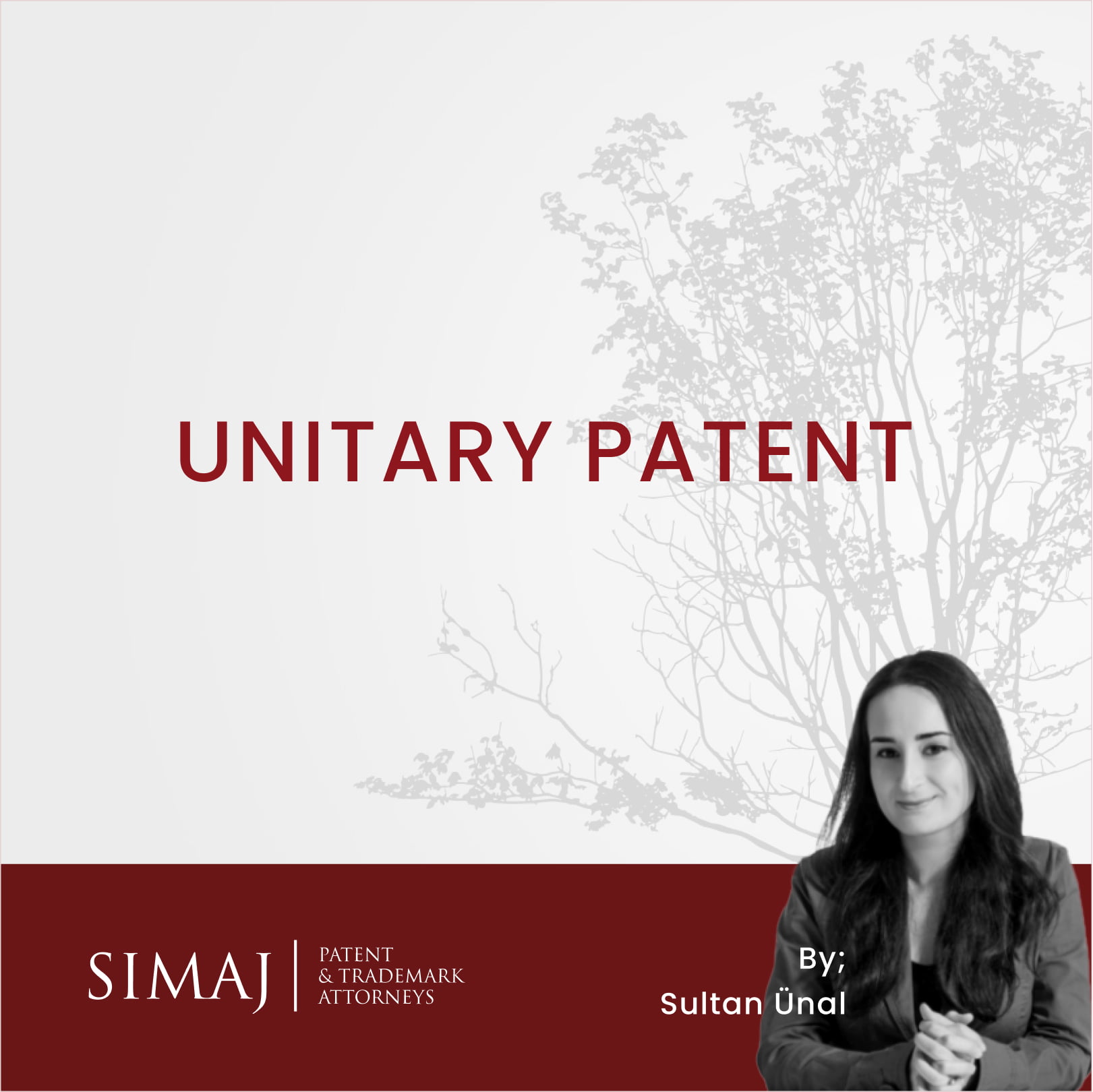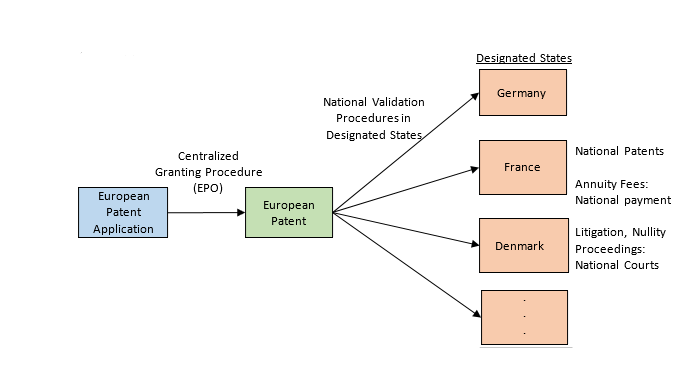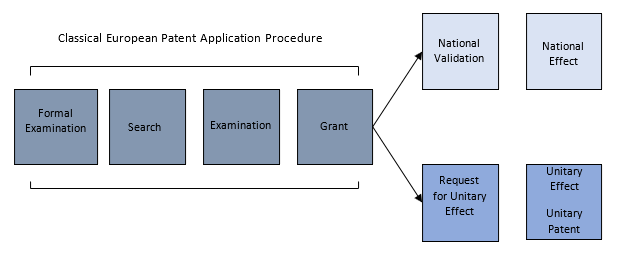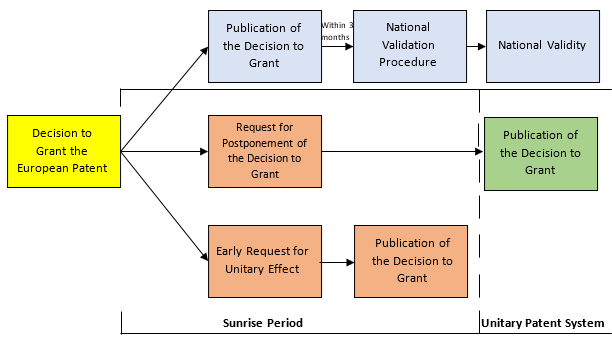Unitary Patent

The Unitary Patent System, a new patent system of the European Union, is getting ready to enter into practice.
The Unitary Patent System, based on EU Regulations 1257/2012 and 1260/2012, forms an indivisible integrity with the Unitary Patent Court responsible for Unitary Patents and “classical” European Patents and entered into force on 20 January 2013.
With the introduction of the Unitary Patent System, it will be possible to obtain patent protection in all participating member states with a single request to the European Patent Office. In this way, it is aimed to offer a less costly system to the applicants, to create a more reliable system by providing legal certainty by eliminating the variety of decisions in different countries through the Unitary Patent Court and to realize an easier procedure with a single currency without the need for separate follow-up in each country included in the system.
The Unitary Patent System will be implemented on the first day of entry into force of the Unitary Patent Court Agreement, which has been signed by a total of 25 European Union member states (see https://www.epo.org/applying/european/unitary/unitary-patent.html), but the number of signatory member states has fallen to 24 with the departure of the United Kingdom from the European Union. For the Unitary Patent Court Agreement to enter into force, it is necessary that 13 countries, including the first 3 countries with the highest number of European Patents in 2012, namely Germany, France and Italy, have completed their approval processes.
Currently, the starting date of the Unitary Patent System has been determined as 01 June 2023.
European Patent System in Current Practice
In current practice, a decision to grant a European Patent (= “intention to grant”, within the scope of EPC Article 71 (3)) is given to a European Patent application that has completed the search and examination processes carried out by the European Patent Office (EPO). Granted European Patents are required to complete the validation procedures in the designated states according to the national legislations within three months from the publication date of grant (= “classical” validation procedure).
A European Patent can therefore be regarded as a “patent bundle” consisting of independent national patents, which must be validated in accordance with the national laws of the contracting states after the publication of the decision to grant, and is subject to national provisions relating to the appointment of attorneys, translation requirements and the payment of annuity fees in each contracting state.

Functioning of the Unitary Patent System
Within the scope of the new system, it is possible to file a request for a unitary effect for a European Patent only after the publication of the decision to grant to obtain a unitary patent that is simultaneously accepted in all participating European Union countries and has the same validity.
The process until filing the request for the unitary effect to EPO does not differ from a classical European Patent application process. Accordingly, after a European Patent application is filed, the search and examination processes will be completed by EPO in accordance with the same standards. Within one month of the publication of grant, a request will have to be made to the EPO for the unitary effect.
Not all European Union countries will be included in the new system, or at least not all of them will participate in the beginning. The Unitary Patent System is based on enhanced cooperation between many European Union countries. Accordingly, unlike countries such as Germany, France, and Italy, which have a great economic importance in Europe and are still included in the system, Spain, Poland, and Croatia do not have any enhanced cooperation so far and will therefore not participate in the new system until further notice. On the other hand, other European Union countries that have enhanced cooperation but have not yet completed their approval processes are expected to join the Unitary Patent System with a delay. This will lead to the formation of different generations of patents between countries that provide European Patent protection with a unitary effect.
The current situation will be maintained in Non-European Union countries (e.g., United Kingdom, Switzerland, and Norway) or in the countries that do not participate in the system due to the above-mentioned reasons, and a granted European Patent must complete the classical validation procedures in each designated country.
In the European Union countries that have participated in the Unitary Patent System, it is not mandatory to file a request for a unitary effect for the European Patent. In parallel with the new system, it is still possible to carry out the classical validation procedures of European Patents separately in the designated countries. Therefore, the new system will not replace the existing system and will be implemented as a complementary system.
However, in a European Union country participating in the Unitary Patent System, a European Patent will not be allowed to provide “double protection” as a Unitary Patent and as a “classical” European Patent that has completed its validation procedure according to the current system.

An example for the practice of the Unitary Patent System is given below:
Example: After the entry into force of the Unitary Patent System, a European Patent is granted. The applicant aims to continue the validation procedures of the European Patent in Germany, the United Kingdom, France, the Netherlands, Spain, and Turkey.
Application:
- Option 1: The applicant may file the request for the unitary effect for the granted European Patent in all countries participating in the Unitary Patent System, including Germany, France, and the Netherlands. In addition, the applicant may follow the classical validation procedures of the patent according to the current practice in the United Kingdom, which is not a member state of the European Union, and in Spain, which is a member state of the European Union but is not participating in the Unitary Patent System. The applicant may also fulfill the classical validation procedure of the European Patent according to the current practice in Turkey, which is not a member state of the European Union and is not participating in the Unitary Patent System.
- Option 2: The applicant of the granted European Patent may not file the request for the unitary effect in all the countries participating in the Unitary Patent System, including Germany, France, and the Netherlands, but may proceed with the classical validation procedures of the European Patent separately in Germany, the United Kingdom, France, the Netherlands, Spain and Turkey.
Transition Process and Measures to the Unitary Patent System
According to the latest information from the Unitary Patent Court, the Unitary Patent System will start on 01 June 2023, following Germany’s submission of its final approval of participation.
Before the starting date of the Unitary Patent System, a three-month transition period was foreseen to alleviate the difficulties that the new system could bring to the applicants, and this transition period is called the “Sunrise Period”. The Sunrise period is expected to begin on 01 March 2023 and will continue until 31 May 2023.

Following the start of the Unitary Patent System, it is possible to file a request for a unitary effect before the EPO only for European Patents for which the decision to grant is published. The unitary effect request must be submitted to EPO within one month from the publication of the decision to grant the European Patent. Taking into account these conditions, the following transitional measures were taken during the transition period:
During the sunrise period, applicants are offered the opportunity to postpone the grant of the European Patents intended for grant until the new system starts. The request for postponement of grant must be submitted to the EPO before or no later than the payment of the fee for grant. As one of the transitional measures, the request for the postponement of the grant allows applicants, who are undecided whether to file a request for the unitary effect for the European Patent, to gain time to reach a decision.
On the other hand, when a decision is made to grant a European patent before the start date of the Unitary Patent System and provided that the decision of grant is published in the sunrise period, the applicant determined to benefit from the unitary effect may apply for a unitary effect for the European Patent even at this stage. In this way, European Patents, for which the request for unitary effect is filed during the sunrise period, will directly enter the system as soon as the Unitary Patent System starts. In countries that are not included in the system, the classical validation procedures of the European Patent can be proceeded within three months after the publication of the decision to grant.

A final important issue regarding the transitional measures is the 6-year (which can be extended up to 12 years) transition period for translation operations. Accordingly, the procedural language of the patent transmitted in the new system will additionally have to be translated into another language. If the patent language is English, one of the official languages of the other countries participating in the system (e.g., German or French) can be freely selected. If the patent language is not English, an English translation of the entire patent specification will need to be submitted. At the end of this transition period, no additional translation for the unitary effect will be submitted. During the transition process, the development of artificial intelligence for translation is aimed to obtain sufficient quality machine translation for all language pairs used in the Unitary Patent System. The submitted translation will have no legal effect and is only for informational purposes.
Advantages of the Unitary Patent System
The national validation procedures of the European Patents certified in the current system must be carried out separately in each designated country. This means a complex and costly validation process carried out in accordance with national procedures in each of the designated country. In addition to the official fees to be paid for national validation requests in each designated country, translation costs, attorney fees and annuity fees incurred in each country are factors that increase the cost.
The Unitary Patent System eliminates complex and costly national validation procedures by bringing many advantages mentioned below.
- > For the registration of the Unitary Patent, EPO acts as a one-stop-shop. Unitary patent protection is provided in all the participating countries of the system with a single request.
- > No fee is required to be paid for filing and examination the request for the unitary effect or for registering the Unitary Patent.
- > At the end of the 6-year transition period foreseen for translation procedures, patent translation is not required.
- > The process after the publication of the decision to grant the European Patent is centrally managed by the EPO. Thus, there is no administrative workload such as the appointment of local representatives.
- > Annuity fee payments are made at once and for a single amount. In addition, ownership transactions such as transfer of rights shall be valid in all member countries of the system with a single request to be made before the EPO.
- > It is aimed to provide a simplified and fast judicial process with the Unitary Patent Court. Infringement and invalidity cases are centrally solved before the Unitary Patent Court.
In order to determine the application strategy in Europe, it is necessary to examine the features of the Unitary Patent System in detail. As a result, the use of the Unitary Patent System for a European Patent protection or the request for a classical European Patent protection by avoiding the request for unitary effect is a matter that needs to be discussed, depending on the cost factors, and taking into account strategic aspects.





